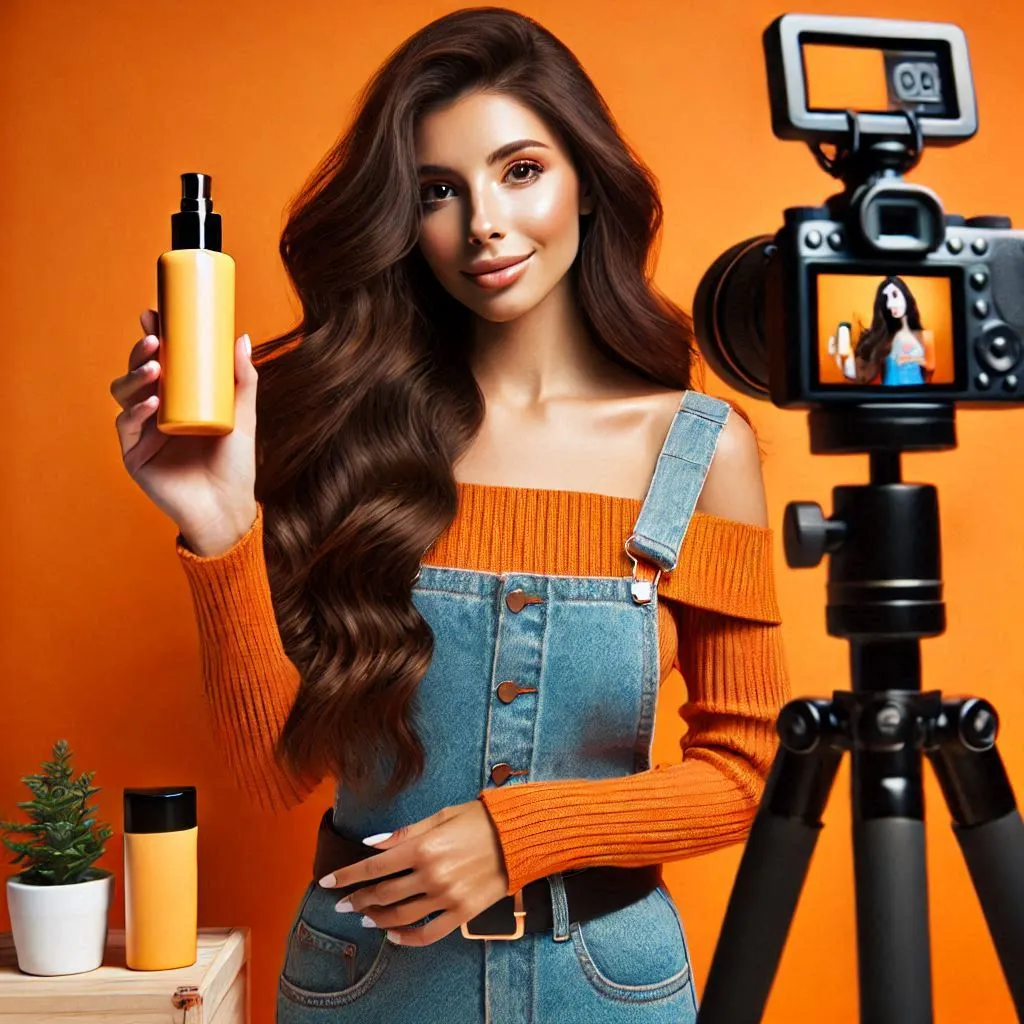
Two types of content formats have been trending lately. Those are UGC & influencer content. Everyone is well-versed with the reach and engagement influencer content provides but UGC content thriving so much is a surprise for everyone. And everyone is wondering —- what to pick for your brands? Are UGC and influencer content interchangeable or do they serve different purposes that deserve separate strategic considerations?
Lets understand this here in this blog.
Table of contents
- What is User-Generated Content (UGC)?
- What is Influencer Content?
- Difference Between UGC and Influencer Content
- When to Use UGC vs Influencer Content?
- UGC vs Influencer Content — Which is better?
- In Conclusion
- Frequently Asked Questions
What is User-Generated Content (UGC)?
Let’s begin with a closer look at UGC. User-generated content refers to any content (videos, images, reviews, etc.) created and shared by a brand’s customers or users rather than the brand itself. The beauty of UGC lies in its authenticity—your customers create content based on their real-life experiences, which makes it relatable, genuine and inherently trustworthy.
UGC can take many forms, including customer reviews, social media posts with branded hashtags, unboxing videos or even user-created memes. Popular brands like Starbucks and Coca-Cola have capitalised on UGC by encouraging customers to share their experiences. For instance, Starbucks has had huge success with its #RedCupContest, where users share their decorated holiday cups for a chance to be featured by the brand. This fosters a sense of community while boosting brand visibility.
And here’s why it works :
- Authenticity & Trustworthiness: UGC is seen as more authentic since it’s produced by real customers rather than a scripted influencer or the brand itself. According to Nielsen’s report on consumer trust, 92% of people trust recommendations from individuals (even strangers) over brands. The study is old but still relevant.
- Cost-Effective: UGC doesn’t require a huge marketing budget. Brands often repost user content for free, saving on production costs.
- Community Engagement: UGC brings customers into the conversation. When a brand shares user-generated content, it encourages others to engage in the same way, creating a cycle of engagement.
- SEO Benefits: User-generated content can boost a brand’s SEO rankings. Positive reviews, comments and social media mentions contribute to improving your brand’s online presence, which helps with search engine visibility.
What is Influencer Content?
Now, let’s shift gears and talk about influencer content. This refers to content created by individuals who have a significant following and influence in a particular niche. Influencers, whether micro or macro, collaborate with brands to create content that promotes their products or services to the influencer’s audience.
Unlike UGC, influencer content is typically paid. Influencers usually charge brands for sponsored posts, which often feature the brand’s product integrated naturally into their lifestyle. Whether through Instagram posts or challenges, influencer content has the power to drive awareness, create buzz and push sales.
Influencer content works because influencers have built trust within their communities. They offer a sense of expertise and relatability that resonates with their followers. This trust can be leveraged by brands to enhance their visibility and credibility.
And here’s why it works:
- Reach & Visibility: Influencers offer brands access to large, engaged audiences. With the right influencer partnership, a brand can tap into markets they wouldn’t have otherwise reached.
- Credibility & Expertise:Credibility & Expertise: Influencers are often perceived as experts or authorities in their niche. When they recommend a product, it carries a sense of authority and credibility, making their followers more likely to take action.
- Professional Quality: Influencers are skilled content creators who produce high-quality, engaging content. Brands benefit from the polished, professional visuals and creativity influencers bring to the table.
- Targeted Audiences: Influencers often operate in specific niches, which makes them perfect for brands aiming to reach a particular demographic or interest group. For example, a vegan beauty brand would benefit from collaborating with a well-known eco-conscious beauty influencer.
Difference Between UGC and Influencer Content
| Key Factors | UGC (User-Generated Content) | Influencer Content |
|---|---|---|
| Authenticity vs. Authority | UGC is seen as more genuine and trustworthy because it’s created by real users, giving an honest snapshot of the product. | Influencer content feels relatable but can sometimes appear overly polished or salesy. However, influencers often bring authority due to their expertise. |
| Cost | Super budget-friendly since brands usually don’t pay for UGC, making it a go-to choice for smaller budgets. | Needs financial investment, often for paid posts. Costs depend on the influencer’s reach and engagement levels. |
| Reach | UGC depends on your existing customers’ reach. Growth is slower but can pick up speed through shares and word-of-mouth buzz. | Influencer content delivers instant access to a large, targeted audience. Reach can skyrocket, especially with influencers who have millions of followers. |
| Brand Control | Gives you less control over how your brand is represented. Users might share content that doesn’t match your messaging perfectly. | Offers more control over messaging and product visuals, but there’s still some risk of influencers misinterpreting your brand vision. |
When to Use UGC vs Influencer Content?
The key question for social media strategists is knowing when to use UGC and when to partner with influencers.
When to Use UGC
- If You’re Looking to Build Trust: UGC is ideal when your goal is to create authentic connections with your audience. It’s perfect for building brand credibility and fostering a community spirit.
- When You Have a Loyal Customer Base: If your existing customers are already loyal and vocal, UGC can help showcase their love for your brand, acting as powerful social proof.
- For Cost-Effective Campaigns: If you’re working with a limited budget, UGC can save on production costs while still generating high engagement.
When to Use Influencer Content
- For Maximum Reach: Influencer marketing is a powerful tool when you want to expand your reach and tap into new customer bases
- To Target Specific Audiences: If you want to target a specific niche, working with influencers who cater to that group is a great strategy.
- For High-Quality Content: Influencers can create high-quality, engaging content that may be out of reach for your in-house team. If content quality is paramount, influencer collaborations may be the way to go.
UGC vs Influencer Content — Which is better?
Why pick one when you can have both? The truth is, combining UGC and influencer content can create marketing magic. Many top brands already use this approach to build high-impact campaigns.
Think of it this way—kickstart your campaign with influencer content to grab attention and set the tone. Influencers bring authority and help introduce your brand to a wider audience. Then, keep the momentum going by encouraging followers to share their own experiences. This taps into the authenticity of UGC, making your message more relatable and trustworthy.
Take the Pulse Pe Pulse Challenge, for instance. The campaign kicked off with a challenge. And influencers like Ashish Chanchlani, Prajakta Koli also took part and challenged others. They created buzz by attempting the challenge and encouraging her followers to join in. The challenge was simple—stack three Pulse candies on top of each other in 15 seconds—and it instantly went viral.
Influencers set the tone and brought visibility, while users jumped in to share their own attempts, tagging the brand and using #PulsePePulseChallenge. The campaign pulled in over 16 million impressions, proving how influencer-driven excitement can fuel authentic UGC, keeping the campaign alive long after its launch.
Conclusion
So, UGC or influencer content—what’s the right choice for your brand? The answer isn’t as straightforward with one being definitively better than the other. It’s all about your goals. If you’re looking to build trust, showcase authenticity and engage with your customers, UGC is a fantastic option. If you need to broaden your reach, target specific audiences and leverage the credibility of industry experts, influencer content may be the right path for you.
You can even blend both kinds of contents. At the end of the day, it’s all about understanding your audience and crafting the content strategy that resonates most with them.
Alteast that’s what we believe as a Digital marketing agency. And we would want to best for our clients. So we experiment and see what works for them and then make changes in our campaigns accordingly.
Cheers!



